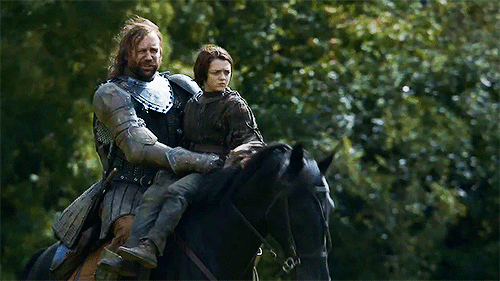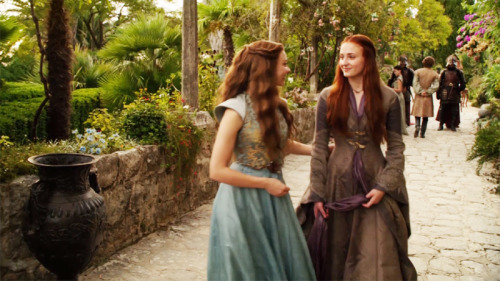Iron Fist is a Marvel Comics character that was created in the 70s during the height of the Bruce Lee-led martial arts explosion. As with most one-note and/or fad creations, the series only lasted for 15 issues because the fad flamed out fairly quickly, as well. (You can see this phenomenon in all kinds of Marvel efforts in the 70s and 80s, including a series based around a trucker, but I digress...) But part of what propelled the series' demise is that the character itself, despite having an interesting backstory that could have led to all kinds of creative discursions, was part of the Marvel Universe™ and had to have some way to compete with the guys who could punch through walls or shoot down aircraft with their eyes or whatever. He had to be, in short, a superhero and not simply a badass martial artist. Whither Batman, you cry? Sure, but he also couldn't just be another badass martial artist who also happened to be filthy rich enough to drive tanks down the street in order to take on the guy made of living flame.
Consequently, Danny Rand also had a superpower: his fist could become unto a thing of IRON!! That's how you beat the guys who could brush off your jeet kune do. That's how you're Iron Fist. And that's how you beat them and be Iron Fist. Every. Single. Time. Every issue involved becoming the thing of iron, perhaps even multiple times. Now, you're thinking that I've just described the average porno (in detail, even.) You're not wrong. But putting aside the implications of getting your readers off with every issue (not passing judgment here; everybody has their thing), you also can't keep doing it the same way every issue (unless you're talking about actual porn. Sometimes. I'm leaving this metaphor.) If every fight is solved by hauling out the iron fist, why not just do it in the first three pages of the issue and deal with the latest super-villain right away? (Just like porn has become 3 minute clips instead of 90 minute films. I'm leaving it. For real.)
Not only do you have to come up with a good reason to not use the ultimate power right away, you have to come up with guys that aren't affected by it unless it's used in new and exotic ways AND you have to convince the audience that all of this is credulous. Granted, baseline credulity and superheroes do not often mix. Your audience is already often predisposed to the fantastical or not really concerned about a shaky premise because they've just decided to plop down and read one issue of your continuing series. But if you do have a regular readership, they're going to get tired of that routine at about the same pace as the writer. No one wants to keep distracting themselves with justifying their story while they're trying to write it. But if your character is more self-contained, you don't have that problem.
Shang-chi also existed in the Marvel Universe™ and was also an outgrowth of the 70s martial arts explosion. However, while Iron Fist lasted 15 issues, Shang-Chi lasted for 125; a success story by almost any measure in the comics world. Shang-Chi was simply a kung fu guy, walking the earth, and his book remained in that sphere. There was no ultimate power because there were very rarely opponents of the standard super-villain style. He did encounter other characters in Marvel's stable, but almost always in their books. His story continued to be largely his story because it was about the character and not about his supreme ability. But that Iron First rule can work against more established and well-rounded characters, as well.
Most people remember this famous scene:
(among others.) "Dude! He can kill people just by looking at them! And holding his hand in the kung fu grip!" OK, fine. Then why does he have to throw down in risky lightsaber battles with his real enemies? Because if Vader could just snuff out everyone he ran across by frowning, there would be no story. "But wait!", you say. "The reason he can't just reach out and treat Luke's head like a water balloon is because Luke is also strong with the Force!" Sure. That's plausible. But what about the next time they meet up? And the next time? And the next time? Eventually, it all comes crashing in, which is why one of the few things Lucas did properly post-Empire was to let Vader die. Once you've presented an irresistible force, it either lays waste to everything or it ends. That, of course, isn't possible if the character in question, like Iron Fist, is the franchise. But that also results in the inherent problem of many sequels in movies.
The first Iron Man film was a good film. Not just a good superhero film, but a good film overall. Well acted, tightly-paced, tightly-written, and with a decent resolution. Tony Stark has created the world's ultimate weapon in the name of defending it and does so successfully. The End. Enter Iron Man 2. What now? "Well... Let's blow more stuff up!" This is the Iron Fist rule again (perhaps it is now just "the rule of Iron"?) You're still a man in a suit of armor and there have to be an increasing number of more spectacular ways of displaying that if you want to keep (some) audiences entertained. Hollywood's shortcut these days is usually CGI explosions, plus 3D, IMAX, and whatever else they can tack on to keep people from simply waiting to watch it on their 50" flatscreens at home. Iron Mans 2 and 3 are not horrible films. Robert Downey, Jr. is the lifeline in both of them, as he was seemingly born to play this role (and Ben Kingsley was a hoot in 3.) Furthermore, Tony Stark has always been one of Marvel's more interesting characters because of his implicit moral quandary (weapons manufacturer wanting to protect people), personal issues (alcoholism), and heavy load of responsibility for his company and the people whose lives are affected by it. The movies portray most of this very well, so it's not as if the films were entirely bogged down by the rule. But there can be little argument that the first film was the best because it simply told a story and didn't concern itself with having 15 Iron Men flying about in one of the most appropriately-labeled deus ex machina moments I can remember:
How do you do better than Iron Man? "Have more! And blow more stuff up!" I'm all about heightening the excitement and trying to top yourself. But there comes a time when the ordnance and the one-note superpower tends to overwhelm the story. At that point, you're just a gimmick and gimmicks, like fads, neither last long (Cue Twilight fans in 3... 2... 1...) nor are remembered very fondly. This rule does stretch into prose, as well, and sometimes very good prose.
I just finished Joe Abercrombie's First Law trilogy. It was excellent. It was a very restrained take on the fantasy genre combined with a rather brutal depiction of medieval mores, all functioning under the relatively obvious veneer of modern political corruption. His characters are great and they speak and act like real people, which is always my first hope in reading or watching a story. One of the most prominent is Logen Ninefingers. Logen is a Northman who can speak to spirits; something he does precisely twice in the ~2000 pages of story. Logen also has an alter ego that resembles the famed Viking battle frenzy, wherein he becomes what people around him refer to as "the Bloody Nine" and proceeds to slaughter everything within reach: friend, foe, and innocent alike. He does this several times in the series and almost always at a crisis point (very Hulk-like, since we're talking about comics.) By the third book, it becomes mildly predictable and a bit tedious, but what restrains it from being a completely Iron Fist situation is that there are implications to his actions beyond simply defeating the enemy. As noted, he kills everything, including characters of some prominence in the story and then is left with nothing but the guilt of having saved some and slain others that he was trying to save. It doesn't rescue the situation completely, but it at least provides tension for the reader, knowing that wanting Logen to go off won't always have the best results for the story if you've become fond of one of his incidental victims. I mention it here largely to demonstrate that the rule isn't a complete death knell to either character or story and can be contextualized successfully. However, the standard note about length must be included. Abercrombie has written three more books in the same world as the First Law series. Logen is not present in them. When his story was done, it was done.
What has occurred to me over the years is simple: If you want to have good characters, they can't be one-dimensional and you can't cover up that lack of depth with any success if you want to do something credible. Granted, it also depends on your readers' willingness to follow along.






















